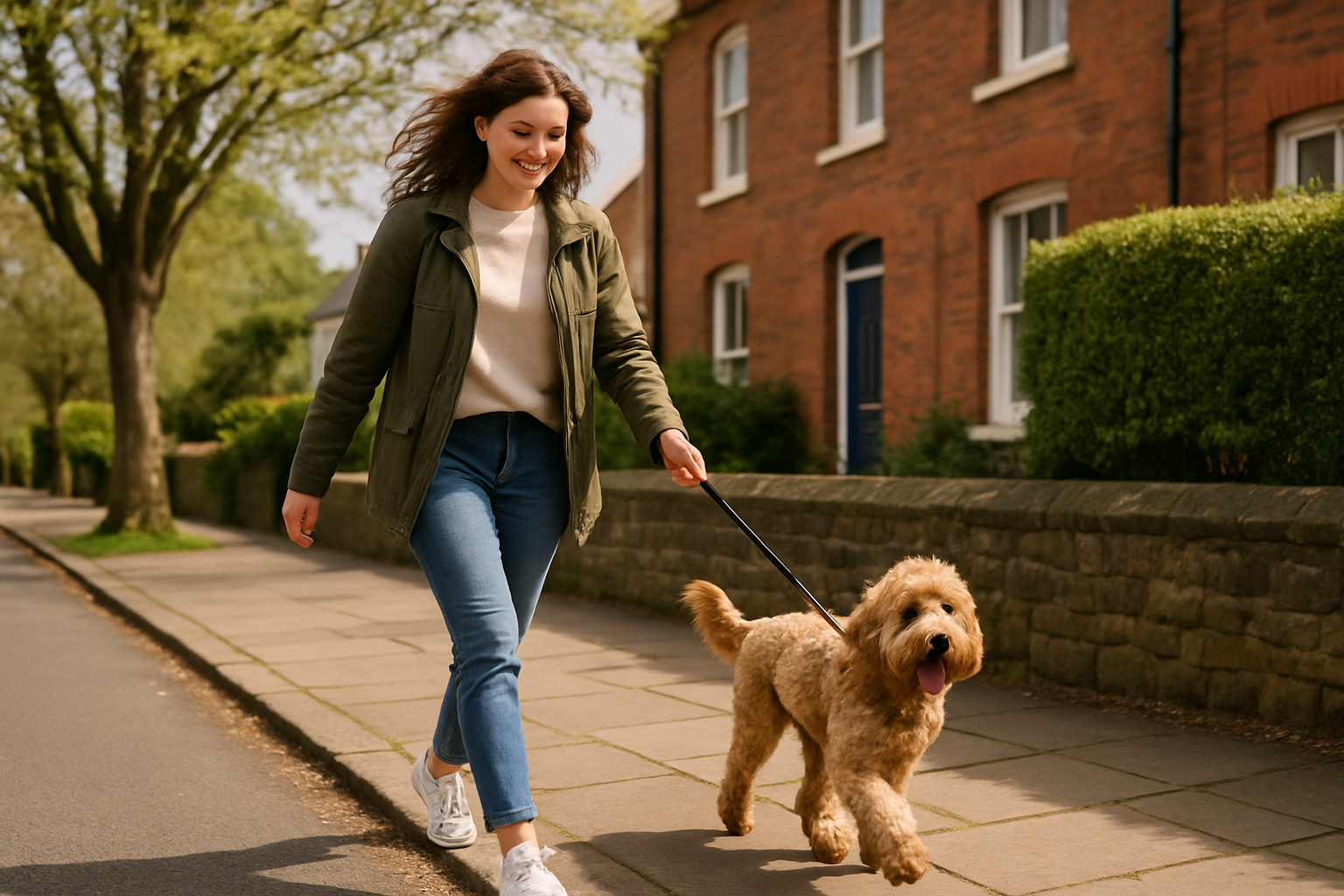Your basket is currently empty!

Joyful Secrets For Lead-Relaxed Walks
Loose lead walking can turn your daily strolls into a calm, connected ritual. If your arm feels a bit longer after every walk, you are not alone. Many of us start out thinking our dogs should simply know how to walk nicely, then feel frustrated when real life kicks in. At PawsGuide, we take a kinder, clearer path. With a handful of simple habits and a sprinkle of patience, you can shift pulling into polite pacing and enjoy a proper natter with your neighbour instead of apologising for tangled leads. It is achievable, and it can even be fun.
Why Your Dog Pulls
Before we get into loose lead walking, it helps to understand the pull. Dogs pull because walking pulls them forward. Sniffs appear quicker when they lean into the lead, and exciting sights pop up round every corner. Many pups are also full of beans, so the lead becomes a tow rope. Add in inconsistent handling and busy environments and you have a recipe for tug-of-war. None of this means your dog is being naughty. It simply means the environment has become more rewarding than you. Our job is to flip that balance so sticking close pays off better than charging ahead.
The PawsGuide Plan
The heart of loose lead walking is teaching your dog that staying by your side makes good things happen. Start somewhere quiet like your sitting room or garden. Hold the lead so there is a soft smile in it, not a tight line. Take one or two steps, then drop a treat by your ankle as your dog stays with you. Mark the moment with a happy “Yes” so your dog knows exactly what earned the snack. Keep sessions short, upbeat and frequent.
For loose lead walking, pick a comfy Y-front harness and a 1.8 to 2 metre lead. The extra length gives your dog room to move without creating tension. Reward often. Think of treats as your dog’s pay packet. In the early days, pay generously for the job you want, not the one you are trying to phase out. If the lead goes tight, stop briefly. Plant your feet, wait for slack, then move on and reward. No yanking, no telling off. You are teaching, not battling.
Once your rhythm looks good at home, step into a quiet street. When loose lead walking outdoors, keep distractions mild at first. Change direction before the lead tightens. Add in patterned movement like small circles or gentle zigzags to help your dog re-centre on you. Pair movement with food or a favourite toy. Sniff breaks are powerful too. Use the environment as a reward by saying “Go sniff” when your dog checks in by your side. It turns the world into your teammate.
Real-Life Layers
Build difficulty like you would a recipe. One layer at a time. Try school-run time only after your dog can float along your quiet route. Keep sessions short, then finish with an easy win. If buses, scooters or other dogs are hard, add distance and increase pay. You can also practise a relaxed stop at kerbs. Ask for a brief pause, feed low by your leg, then step off together. This keeps positions tidy and helps your dog choose calm over chaos.
Troubleshooting
If loose lead walking falls apart, reduce the difficulty. Go back to a simpler route, shorten the session or boost your rewards. Swap to softer training treats your dog loves. Check fit again, as a poorly fitted harness can cause discomfort. If your dog surges towards a trigger, create space with a calm U-turn and feed for following. Do not worry about perfection. Consistency beats intensity. A few focused minutes each day trumps a long, frazzled walk.
Confidence Boosters
Celebrate small wins. Keep loose lead walking fun with a quick game of find-it on the grass. Sprinkle five treats and let your dog sniff them out. Use your voice kindly, smile and breathe. Dogs notice when we soften. PawsGuide clients often tell us that the moment they stopped powering through and started training in tiny chunks, everything clicked. That can be your story too.
Your Next Step
Pop a treat pouch by the door, choose a quiet time and practise ten steps of success. Repeat two or three times a day. In a few weeks, you will likely feel a lighter lead and a happier pace. Loose lead walking is not a trick, it is a conversation that grows with you and your dog. You have got this, and we are cheering you on from PawsGuide HQ 🙂
If you need extra support or additional resources, visit our ‘Useful Links’ page for further guidance.
